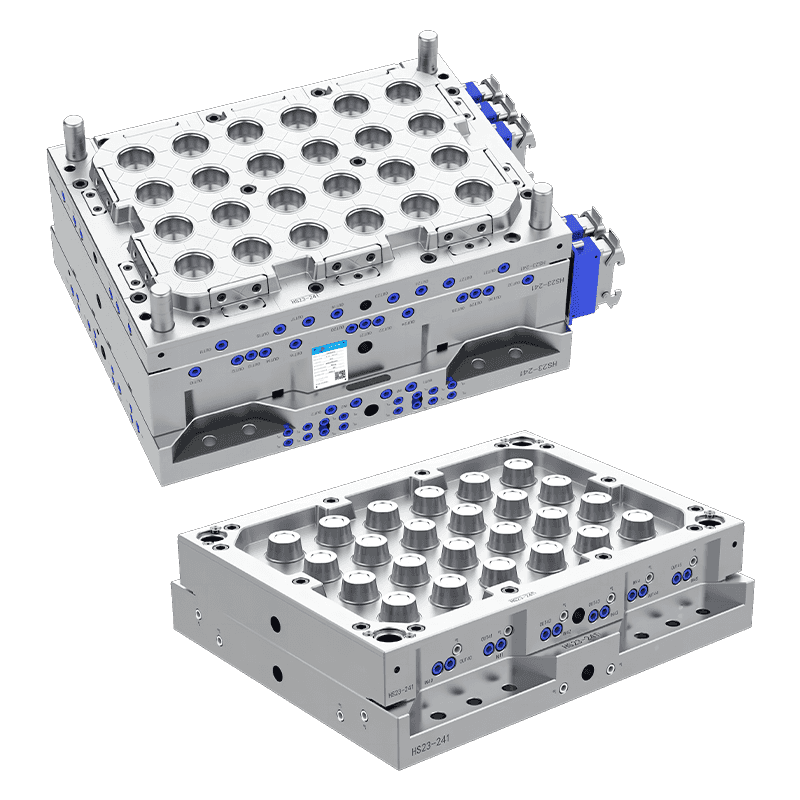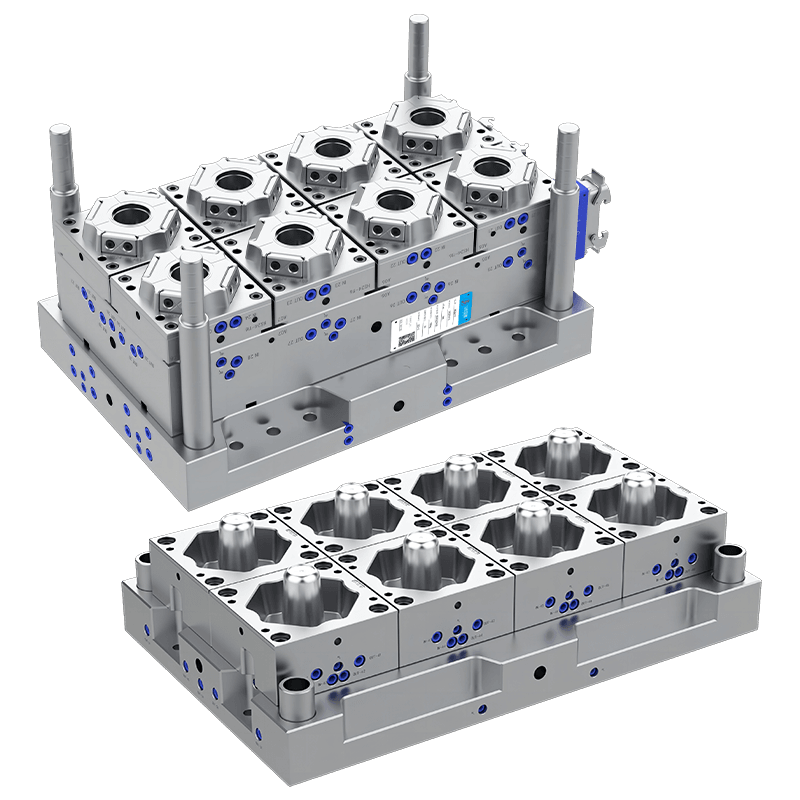How to Increase Efficiency with Plastic Food Container Moulds
In today's competitive manufacturing landscape, increasing efficiency in the production of plastic food container moulds and lunch box molds is critical to improving profitability and meeting market demands. Techniques such as optimizing the cooling system, reducing material waste, and fine-tuning mold design can make a significant impact. This article explores practical strategies for enhancing production efficiency and the tangible benefits these improvements bring to factories.
The Role of Efficient Moulds in Food Container Production
The demand for reliable and quality food containers is growing, and efficient plastic food container moulds are at the core of fulfilling this demand. Mould efficiency directly affects cycle times, energy consumption, and ultimately, the cost per unit produced. Implementing adjustments and improvements can streamline production, reduce costs, and increase output in both the short and long term.
Optimizing the Cooling System for Faster Cycles
A well-optimized cooling system in plastic food container moulds is one of the primary ways to reduce cycle times and increase output. Cooling typically consumes up to 70% of the cycle time in plastic molding, meaning any gains here can have a substantial impact.
1. Upgrading Cooling Channels
Adding efficient cooling channels within the lunch box mold design can help reduce the amount of time required for the mold to cool. High-quality mold channels circulate coolant more evenly, ensuring the container cools at an even rate. This helps in avoiding imperfections and results in faster production cycles, ultimately reducing costs.
2. Using Conformal Cooling Technology
Conformal cooling channels, which follow the contours of the mold, are another way to enhance efficiency. They offer improved cooling performance over traditional straight-line channels by allowing the coolant to reach more areas of the mold surface. This uniform cooling not only speeds up cycle times but also minimizes the chances of warping or shrinking in food containers.
Reducing Material Waste in Plastic Molding
Reducing material waste is another essential factor in boosting efficiency. Wasted material not only affects the bottom line but also contributes to environmental waste, which many companies are striving to minimize.
1. Precision Mold Design
Designing a plastic food container mould with precision helps in controlling the amount of material used in each cycle. For example, incorporating ribbing or minimizing wall thickness can help decrease the amount of plastic needed per container without compromising durability. This reduction in plastic per unit adds up over time, cutting down on raw material costs significantly.
2. Using Hot Runner Systems
Hot runner systems are beneficial in minimizing waste by ensuring that only the necessary plastic flows into the lunch box mold. This reduces the amount of leftover plastic and avoids the need for trimming or recycling excess materials. With reduced waste, the overall production process becomes leaner and more cost-effective.
Improved Mold Maintenance for Consistent Quality
Efficiency also depends on maintaining high-quality molds. Proper maintenance prevents unexpected downtime and keeps production running smoothly.
1. Scheduled Maintenance Checks
Regular maintenance of plastic food container moulds is essential for consistent production. Checking for issues such as leaks, cracks, or wear in cooling channels can prevent problems before they impact production. Scheduled inspections also help in identifying small issues that could escalate into significant problems, thus avoiding costly repairs and delays.
2. Lubrication and Cleaning
Frequent lubrication and cleaning of mold components reduce friction and wear, maintaining smooth operation. Clean molds prevent defects in final products, such as surface imperfections, which would otherwise lead to rework or disposal. Keeping lunch box molds in optimal condition not only extends their life but also ensures uniform quality across each production cycle.
Integrating Automation to Enhance Productivity
Automation in the molding process can significantly improve production speed and consistency. Automated systems, such as robotic arms, can reduce cycle times by quickly handling molded containers as soon as they are ready, allowing the next cycle to begin immediately.
1. Robotic Assistance in Removal and Handling
Robotic arms can assist in the swift removal of containers from the plastic food container mould. By automating this step, companies can reduce idle time between cycles, increasing the number of cycles per hour and leading to greater overall production capacity.
2. Quality Control Automation
Automated quality control systems that inspect each unit for consistency, thickness, and structural integrity can save time and reduce the need for manual checks. Real-time quality control ensures that any defective units are identified early, minimizing rework and helping to maintain consistent quality levels across each batch.
Benefits of Efficiency in Plastic Molding
By focusing on optimizing cooling, reducing waste, maintaining molds, and implementing automation, companies can achieve tangible results in production efficiency. Here are some of the direct benefits that result from these improvements:
*Cost Reduction: Improved mold efficiency reduces material costs, energy consumption, and cycle times, leading to significant savings.
*Higher Output: Shorter cycle times and automation allow factories to produce more units in less time, meeting demand and maximizing capacity.
*Enhanced Quality Control: With well-maintained molds and automated quality checks, products maintain consistent quality, reducing waste from defective items.
*Environmental Benefits: By reducing material waste and energy use, production becomes more sustainable, aligning with eco-friendly practices.
Contact Us
Email: [email protected]; Or fill out the contact form below.

 English
English 中文简体
中文简体 русский
русский Español
Español Français
Français




